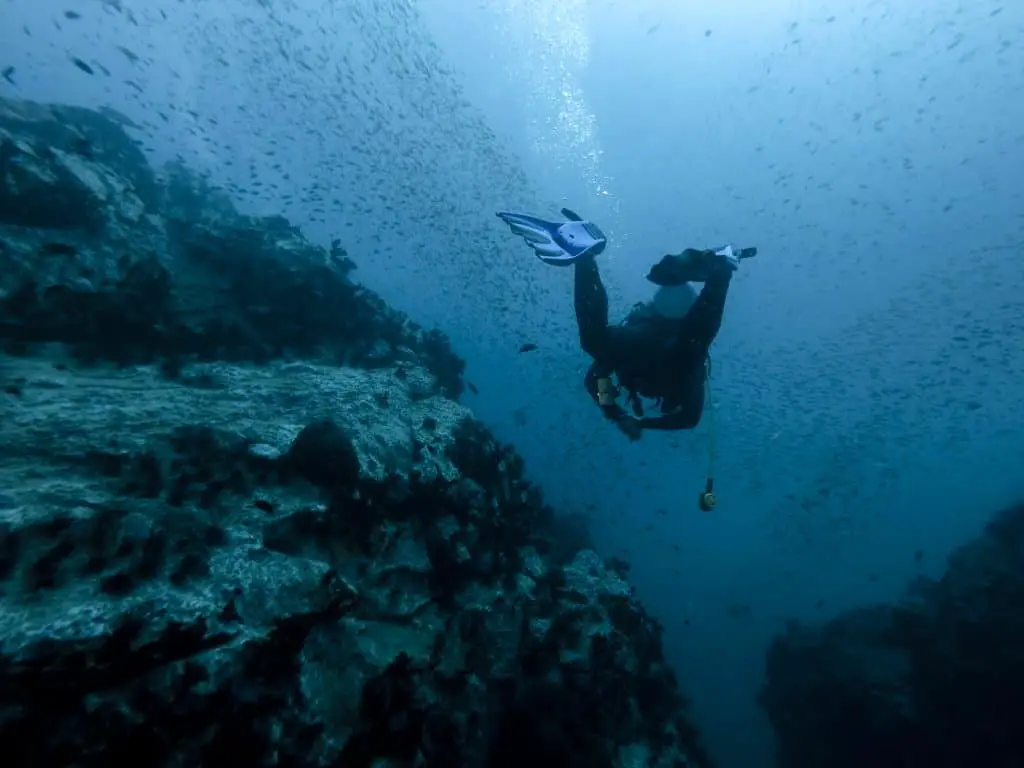Swimming Backward – Something a Diver Should Be Able to Do?
One thing that many new divers learn quickly is the intricacy of the swim kick. Because, while it may seem straightforward, choosing the right swimming style is a huge asset to a successful dive, especially for filming and underwater photography.
And of all of the styles that you can learn, figuring out how to swim backward is one of the more useful and probably one of the trickiest techniques.
After all, if when you want to get up close to the reef without touching anything or if you’re interested in filming a moving object like a shark or your fellow divers from the front, you’re going to need to swim backward. And it seems simple, but there’s more to it than just switching directions.
Why this skill is so important
It’s no secret that divers can impact underwater life. Yet, for a long time, we had no idea how damaging that impact could be. It was common practice for divers to touch coral reefs, either to fulfill a curiosity or push off to change trajectory and even to reach out to make contact with wildlife.
Of course, we now know that humans pose a serious threat to marine ecosystems as a result of this close proximity. Simply touching a reef or the fin of a passing fish can pass on deadly bacteria or inflict a critical injury. And we’re witnessing the effects of our unknowing actions.

What do you need to do when you find an unconscious diver underwater?
Reefs are easily damaged and do not easily recover. Marine life populations, which are already in distress due to factors like damaging fishing practices and climate change, maybe increasingly vulnerable to negative human contact.
While it may be difficult to remedy the damage that has been done, divers’ commitment to ocean health can ensure that there is no further contact with these living organisms. So, when you’re getting up close and personal, you also need to know how to back out.

The reverse or backwards kick
At first glance, this is a truly awkward kick, in which you must scoop water inward when you would otherwise push it away.
It may help to think of it as the opposite of a frog kick: the motion is essentially the same. Start, then, with straight legs, flex your ankles out in a duck stance, and bend your knees out or down. This motion will move water towards your torso, allowing you to slink slowly backward.
You’ve probably done something similar with your arms, turning your palms forward and moving them away from you in order to propel yourself back. It’s a similar motion, here.
Some divers say the trick is not to overthink it. Your body instinctively knows the physics, you may just have to practice it a few times.

The advantage of this kick is that you can back out of a situation without using your hands at all. This not only keeps you from touching anything fragile, but also allows you to continue filming or taking pictures. It also allows you to back away without taking up too much space, which is helpful when you’re in a tight space like a cave or sunken ship, or are surrounded by other divers.
Do you need to know how to read tide tables? Have a look for yourself!
Swimming on your back
In other scenarios, maybe you’re not trying to back out of a tight squeeze but instead trying to get just the right shot of the fish swimming overhead. With the proper training and practice, you can actually maintain your buoyancy on your back while also pointing the camera up towards the surface.
So, how does it work?
Does diving backward into the water count as backward swimming?
Bubbles around you!
Tip number one: think about switching to a closed-circuit rebreather. This breathing apparatus, first designed and used for military operations as early as the 1800s, allows you to dive without intrusive bubbles being released into the water around you.
Not only does it help to keep the surrounding wildlife calm, but it also allows you to propel backward without finding yourself lost in a cloud of your own bubbles.
Master Buoyancy
Tip two: find your buoyancy. Flipping over in the water is not exactly as easy as it sounds. You have to worry about maintaining your position while also making sure that none of your equipment is suddenly dangling too close to your surroundings.
It’s probably best to try this out in an area that you know is clear and also with people who can help you out. One suggestion to help with the change in buoyancy is to lower your BCD before you flip.

Practice, practice, practice
Whether you’re trying to back away from a pristine underwater scene or getting up close and personal with a majestic manta ray, swimming backward is a critical skill for your development as a diver.
Not only is it useful for getting out of tight situations, but it’s also absolutely necessary to know how to swim backward for your own safety and the maintenance of ocean safety.
So, get out there and start practicing your reverse kick and on-the-back swimming style!


